Urban gardening lessons for Dutch children
April 21, 2006
On an island in Amsterdam’s Westerpark, a horizontal grid of 1m2 garden plots are being prepared for the children. The sign says that around 500 children will receive weekly education about nature and the environment on these plots. Although this garden grid offers an extreme image of mini-allotments filled with one carrot, one lettuce, one rhubarb, one sunflower, one fennel, one this and one that, I cannot say that I think this is a negative idea in terms of education. In fact, gardening in this way has the potential to teach children about density and clustering. It’s like an MVRDV-isation of grammar school education. By this I am referring to educarion informed by architects MVRDV’s notions of density and as explored in their publications FARMAX (floor area ratio) and KM3, (cubic kilometer) Excursions on Capacities from Actar Publishers. Next step, vertical gardening for urban children!
(The image has been enhanced to increase readability of the sign.)
debra at 7:13 | | post to del.icio.us


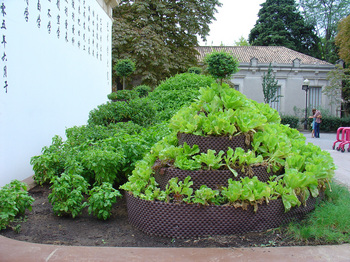
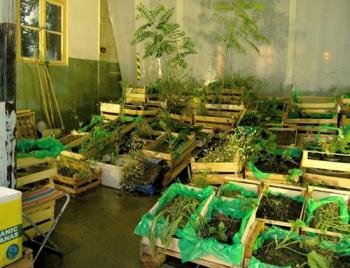
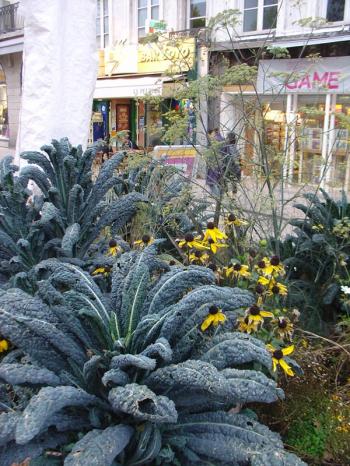
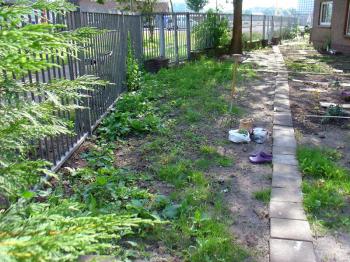
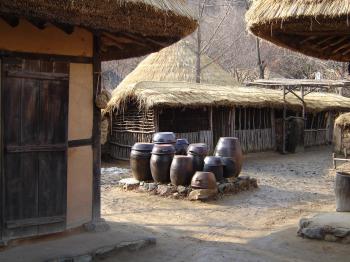
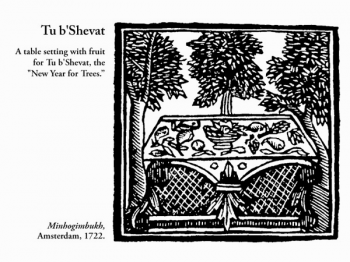








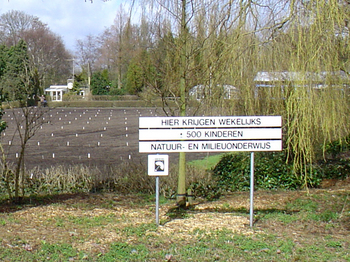
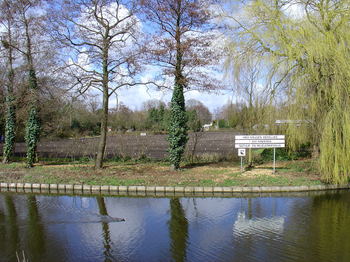



It is the most wonderful experience for children and parents. (Not in the least because of the presence and skills of Wil Demandt (Bordewijk) during the Open House Day)
Its is more than one carrot, one fennel, etc it’s learning the relation between organic gardening and the taste of food. And they grow much more on their small allotment than their family can eat. Just great.
Pictures:
Comment by Elz — April 23, 2006 @ 15:01
Beste Elz, Wonderful that the chef of Bordewijk was there on the Open Day. This project reminds me of Alice Waters’ Edible Schoolyard project in Berkeley California (or is it Oakland?) where she as spokesperson for California Slow Food teaches children through gardening about food and eating. I didn’t mean to imply that the students were growing 1 carrot, 1 radish etc… more that visually, the grid has the potential to suggest that. And that makes me wonder about what happens in the class. Do students band together a few of those squares and divide up the labour?
One of the first things I notice about having a garden in a place where my friends also have gardens, is that we don’t all want to grow the same things and we make choices to increase the variety. I wonder if the kids do that too.
Also, when playing the adult game of, ‘can I be self-sufficient-ish’ one is immediately confronted with the notion of sharing the harvesting, the verwerking’, the transformation of certain crops into jams, chutneys, the cooking. My dear sweet friend is really the jam and chutney maker. I rely on her for that. I am really the cook, she relies on me for that.
Before writing this I had just read KM3, and was really thinking about landscape design (and architecture, city planning) based upon statistics. The grid spoke to me. And it said, ‘one carrot, one radish, one cress, one celery, one parsley, one bean, one broccoli.
May I post the St. Antonius School images?
Mvrgr,
Debra
Comment by Debra — April 23, 2006 @ 18:03
Wow - great pictures. The kids look really happy. I’ll take some pictures of the Occitanian children’s kitchen gardens on Thursday. Totally different look.
Comment by debra — April 23, 2006 @ 18:07
Dear Debra,
Great to describe the Westerpark schoolgardens and to connect this intiative to MVRDV’s recent K3 publication.
Two names pop up in my head: Alice Waters and Nils Norman. Waters as a pioneer of kid-friendly conscious gardening with her Edible Schoolyard, Norman as the artist of a younger generation who introduced his version of an Edible Schoolyard about five years ago. I filmed Norman in London during one of his visits to elemenetary schools that took part in his ES programme.
Talking about Density and K3…just get rid of the concrete, turn the schoolyard into a garden - now there’s the benevolence of sustainable congestion!
Alice Waters: http://www.edibleschoolyard.org/
Nils Norman: http://www.southlondongallery.org/docs/exh/exhibition.jsp?id=21
Comment by Ronald — April 24, 2006 @ 13:56
Hi R,
You’re absolutely correct. I mentioned Waters in the comment above. I saw a documentary about her teaching children about food, children that had been gardening, and they were so eager to eat.
Thanks for the tip re: N.N.
Mvrgr, D
Comment by debra — April 24, 2006 @ 23:11
The pictures are public, so be my guest. This comment is a bit late.
They learn how to plant, and how to treat the plants in order to keep them healthy. The guy Bert, who teaches, keeps stuffing the kids with information about kitchen gardening. They don’t share their gardens and Bert decides what to grow. It takes some time to prepare all those seeds and plants for all those children. They help each other though.
My 2 daughters now have their own corner in our place in France and i know some of their former classmates have little gardens somewhere. They like to grow plants and cook and eat.
(We live in the Nieuwmarktbuurt in Amsterdam, so no garden here.)
Comment by Elz — May 14, 2006 @ 14:53